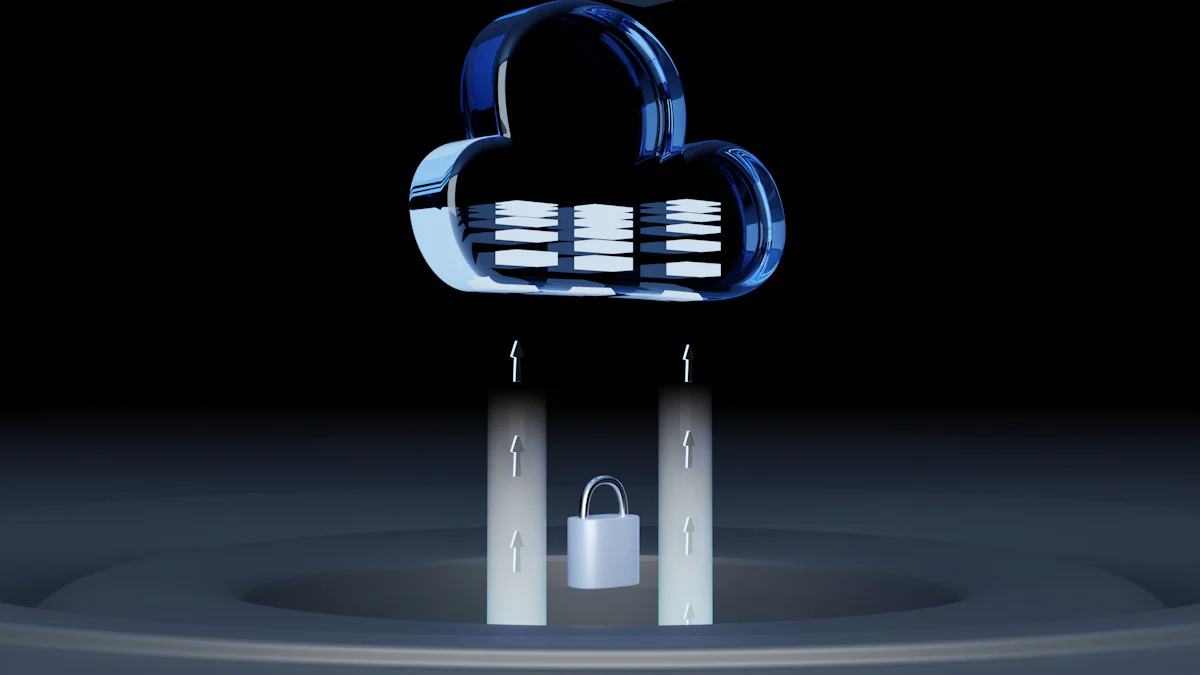


Public Cloud Security protects your data and resources in shared cloud environments. Businesses rely on cloud service providers to implement security measures. The digital landscape changes rapidly, and so do security threats. Many companies face cloud security incidents, with 27% experiencing issues last year. Misconfigurations and data breaches are common problems. Public cloud breaches often cost more than hybrid ones. Data loss, leakage, and privacy concerns top the list of worries. As enterprise cloud spending grows by 29%, understanding Public Cloud Security becomes crucial for safeguarding your assets.
Understanding Public Cloud Security
Definition and Components of Public Cloud Security
Public Cloud Security keeps your data safe in shared environments. You might wonder what makes up Public Cloud Security. Let's break it down.
Security Measures
Security measures form the backbone of Public Cloud Security. These measures include firewalls, encryption, and intrusion detection systems. Firewalls block unauthorized access. Encryption scrambles your data so only authorized users can read it. Intrusion detection systems alert you to suspicious activities. Each measure plays a vital role in protecting your information.
Technologies Involved
Technologies involved in Public Cloud Security enhance protection. Cloud providers use advanced technologies like AI and machine learning. AI helps identify threats faster. Machine learning improves security protocols over time. These technologies work together to keep your data secure.
How Public Cloud Security Works
You might ask how Public Cloud Security actually works. The process involves several key components.
Security Protocols
Security protocols guide how data moves in the cloud. Protocols like SSL/TLS encrypt data during transmission. This encryption prevents data interception by unauthorized users. Protocols ensure that your data travels safely from one point to another.
Data Protection Mechanisms
Data protection mechanisms safeguard your information. Backup solutions store copies of your data. These copies help recover lost information. Access controls limit who can view or change your data. Such mechanisms ensure that only authorized users can access sensitive information.
Public Cloud Security combines these elements to protect your assets. Understanding these components helps you make informed decisions. You can better safeguard your data in the cloud.
Types of Public Cloud Security

Public Cloud Security involves different types of measures to keep your data safe. Let's dive into the main types that help protect your information.
Network Security
Network security plays a crucial role in Public Cloud Security. This type of security focuses on protecting the network infrastructure from unauthorized access and threats.
Firewalls
Firewalls act as a barrier between your network and potential threats. They monitor incoming and outgoing traffic based on predetermined security rules. Firewalls block unauthorized access and allow legitimate communication. This ensures that only safe data passes through your network.
Intrusion Detection Systems
Intrusion Detection Systems (IDS) keep an eye on your network for suspicious activity. IDS alert you when they detect potential threats or breaches. This allows you to respond quickly to any security incidents. By using IDS, you can maintain a secure environment for your data.
Data Security
Data security is another essential component of Public Cloud Security. It focuses on protecting your data from unauthorized access and loss.
Encryption
Encryption transforms your data into unreadable code. Only authorized users with the correct decryption key can access the original information. Encryption ensures that even if someone intercepts your data, they cannot read it. This provides an extra layer of protection for your sensitive information.
Data Loss Prevention
Data Loss Prevention (DLP) strategies help prevent accidental or intentional data leaks. DLP tools monitor data transfers and block unauthorized sharing. These tools ensure that your data remains within your control. By implementing DLP, you can minimize the risk of data breaches.
Identity and Access Management
Identity and Access Management (IAM) is a critical aspect of Public Cloud Security. IAM focuses on managing user identities and controlling access to resources.
Authentication
Authentication verifies the identity of users trying to access your system. Multi-factor Authentication (MFA) adds an extra layer of security by requiring users to provide multiple forms of identification. This reduces the risk of unauthorized access to your cloud resources.
Authorization
Authorization determines what actions a user can perform once authenticated. Privileged Access Management (PAM) solutions help control user permissions. PAM ensures that users have access only to the resources they need. This limits potential damage from compromised accounts.
Public Cloud Security encompasses these various types to safeguard your data and resources. By understanding and implementing these measures, you can create a more secure cloud environment.
Comparing Public Cloud Security with Alternatives
Exploring the differences between Public Cloud Security and other security models helps you make informed choices for your business. Let's dive into how Public Cloud Security stacks up against private cloud and on-premises security.
Public vs. Private Cloud Security
Key Differences
Public Cloud Security involves shared environments where multiple users access resources. Private cloud security, on the other hand, provides a dedicated environment for a single organization. This means private clouds offer more control over security settings. Public clouds rely on cloud service providers to manage security measures. Private clouds allow organizations to customize their security protocols.
Pros and Cons
Public Cloud Security offers scalability and cost efficiency. You can easily adjust resources based on your needs without significant upfront investments. However, shared environments might pose risks like data breaches or misconfigurations. Private clouds provide enhanced control and customization. You can tailor security measures to fit specific requirements. The downside is higher costs and limited scalability compared to public clouds.
Public Cloud vs. On-Premises Security
Cost Implications
Public Cloud Security often proves more cost-effective than on-premises solutions. You pay for what you use, which reduces unnecessary expenses. On-premises security requires substantial upfront investments in hardware and maintenance. Companies with mature cloud security experience lower data breach costs. A study showed that such companies saved 15.7% compared to those with early-stage maturity.
Flexibility and Scalability
Public Cloud Security excels in flexibility and scalability. You can quickly scale resources up or down to meet changing demands. On-premises security lacks this agility. Scaling requires additional hardware and time-consuming processes. Public clouds support rapid innovation and deployment of new applications. On-premises solutions face limitations in adapting to evolving business needs.
Understanding these comparisons helps you decide which security model aligns best with your goals. Public Cloud Security offers unique advantages, but evaluating alternatives ensures you choose the right fit for your organization's needs.
Benefits and Risks of Public Cloud Security

Benefits of Public Cloud Security
Cost Efficiency
Public cloud security helps you save money. You pay only for the resources you use. No need for big upfront investments in hardware. This flexibility reduces unnecessary expenses. Businesses often find this approach more budget-friendly.
Scalability
Scalability stands out as a major benefit. You can easily adjust resources based on demand. Need more storage or computing power? Scale up quickly. Demand drops? Scale down just as fast. This adaptability supports growth without hassle.
Risks of Public Cloud Security
Data Breaches
Data breaches pose a significant risk. Hackers target public cloud environments. Misconfigurations often lead to vulnerabilities. Protecting sensitive information becomes a challenge. Companies must stay vigilant to prevent unauthorized access.
Compliance Challenges
Compliance challenges arise in public cloud settings. Different regions have varying regulations. Meeting these standards requires careful planning. Non-compliance can lead to hefty fines. Businesses need to ensure their cloud practices align with legal requirements.
Guidance on Selecting Public Cloud Security Measures
Choosing the right security measures for your public cloud environment can seem daunting. Let's break it down into manageable steps to make the process easier.
Assessing Security Needs
Understanding your specific security needs is crucial. You need to evaluate what your business requires and how regulations affect your operations.
Business Requirements
Every business has unique security requirements. Identify what data and applications need protection. Consider the potential impact of a security breach on your operations. Think about the resources you have available for security measures. Align these needs with your overall business goals.
Regulatory Compliance
Regulatory compliance plays a significant role in cloud security. Different industries face different regulations. Healthcare, finance, and retail sectors have strict guidelines. Ensure your cloud security measures meet these legal standards. Non-compliance can lead to penalties and damage to your reputation.
Evaluating Security Providers
Once you understand your needs, it's time to evaluate potential security providers. Look for providers that align with your requirements and offer reliable services.
Reputation and Reliability
A provider's reputation speaks volumes about their reliability. Research reviews and testimonials from other businesses. Check if the provider has experienced any security breaches in the past. A strong track record indicates a trustworthy partner for your cloud security needs.
Service Level Agreements
Service Level Agreements (SLAs) define the terms of service between you and the provider. Examine the SLAs carefully. Look for guarantees on uptime, data protection, and response times. Ensure the SLA aligns with your business needs and expectations. A well-defined SLA provides peace of mind and sets clear expectations.
By following these steps, you can select the right public cloud security measures for your business. Understanding your needs and evaluating providers will help you create a secure cloud environment.
Public cloud security holds immense importance in today's digital world. Businesses must protect data from threats like misconfigurations and data breaches. Misconfigurations often lead to security incidents. Data loss and privacy concerns top the list of worries. Proactive measures can safeguard your cloud environment. Regularly review security settings. Implement strong access controls. Use encryption for sensitive data. Stay informed about the latest security trends. Taking these steps will help you maintain a secure cloud environment. Remember, securing your data is not just a necessity; it's a responsibility.
FAQ
Public cloud security involves measures to protect data and resources in shared cloud environments. Cloud service providers implement these measures. The goal is to keep your information safe from unauthorized access.
Public cloud security is crucial for protecting sensitive data. Many companies face cloud security incidents. A survey shows that 80% of companies experienced at least one incident last year. Misconfigurations and data breaches are common threats. Effective security helps prevent these issues.
Cloud providers use various technologies and protocols. Firewalls, encryption, and intrusion detection systems are common tools. Providers also employ AI and machine learning to identify threats quickly. These technologies work together to safeguard your data.
Data breaches and compliance challenges top the list. Hackers target cloud environments. Misconfigurations often lead to vulnerabilities. Different regions have varying regulations. Meeting these standards requires careful planning.
Start by assessing your security needs. Identify what data needs protection. Evaluate potential security providers. Look for strong reputations and reliable services. Ensure that your cloud practices align with legal requirements.
Continue Reading About Public Cloud Security
10 Game-Changing Project Management Reporting Types!
Unlock project success with 10 must-know reporting types! Track progress, manage risks, and stay on budget like a pro.
Lewis
Mar 03, 2025
10 Must-Have Marketing Agency Reporting Tools for Your Success
Optimize your agency's performance with top reporting tools. Explore analytics, social media, SEO, and more for data-driven decisions and efficiency.
Lewis
Oct 09, 2024
15 Best Software Reporting Tools for 2025
Explore the top 15 software reporting tools for 2025. Compare features, pricing, and usability to find the best fit for your business needs.
Lewis
Oct 08, 2024
2025 Best Data Integration Solutions and Selection Guide
Explore top data integration solutions for 2025, enhancing data management and operational efficiency with leading platforms like Fivetran and Talend.
Howard
Dec 19, 2024
2025 Data Pipeline Examples: Learn & Master with Ease!
Unlock 2025’s Data Pipeline Examples! Discover how they automate data flow, boost quality, and deliver real-time insights for smarter business decisions.
Howard
Feb 24, 2025
2025's Best Data Validation Tools: Top 7 Picks
Explore the top 7 data validation tools of 2025, featuring key features, benefits, user experiences, and pricing to ensure accurate and reliable data.
Howard
Aug 09, 2024


